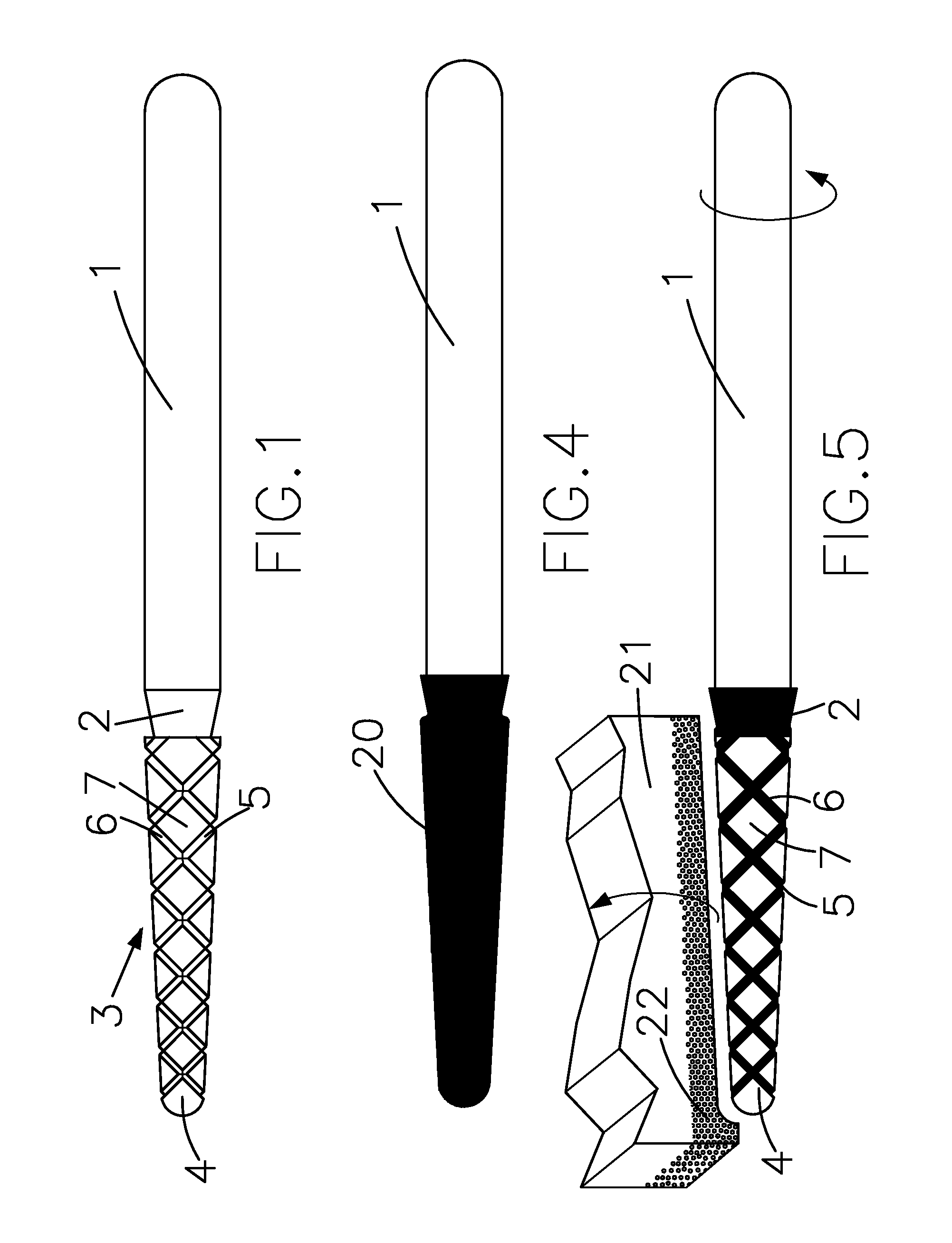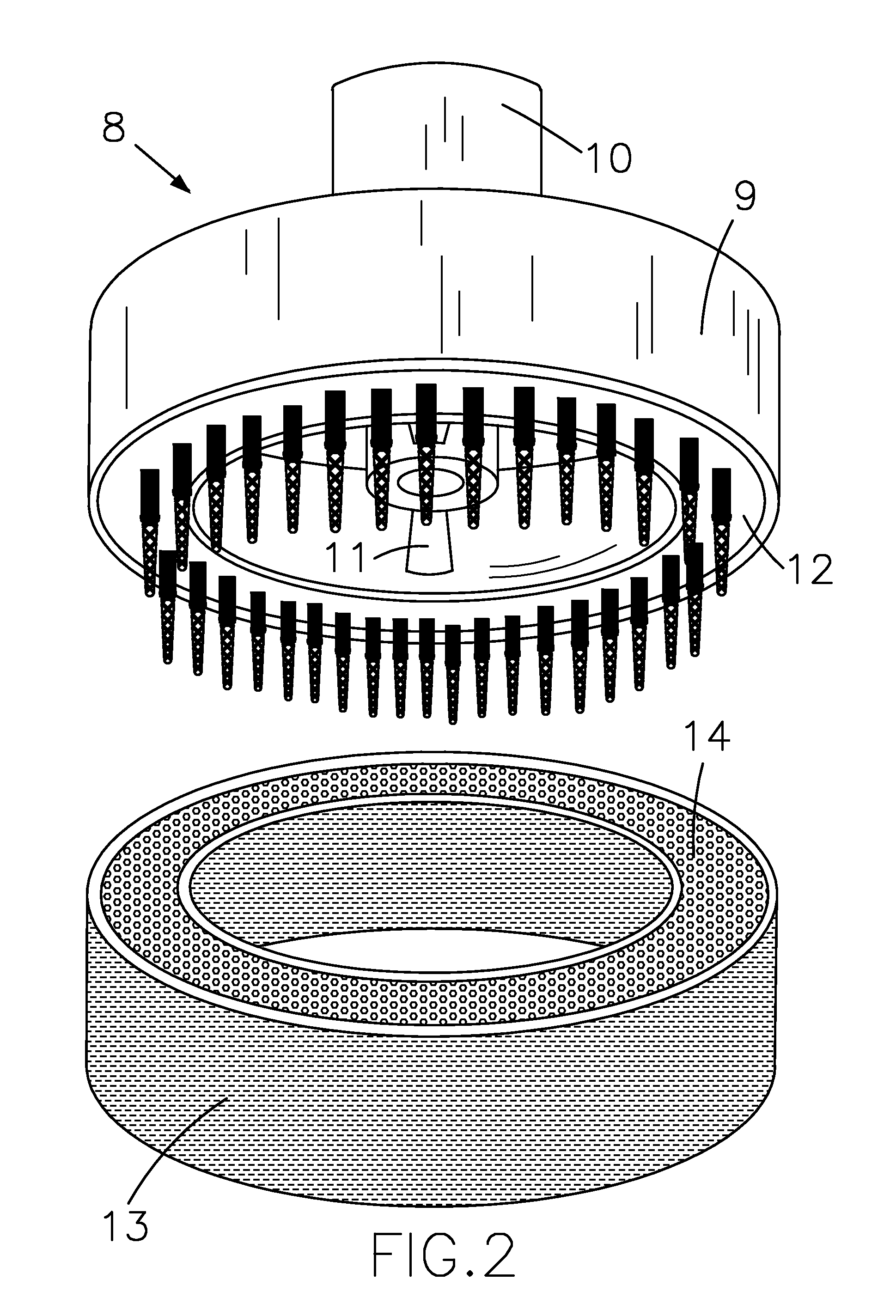Method for applying a powdered-diamond coating to the surface of cutters for dentistry excluding slot surfaces
a technology of diamond coating and dental cutter, applied in the field of surgical instruments, can solve the problems of inability to easily automate, inconvenient application, and inconvenient use, and achieve the effect of reducing production costs and reducing the cost of disposable cutters
- Summary
- Abstract
- Description
- Claims
- Application Information
AI Technical Summary
Benefits of technology
Problems solved by technology
Method used
Image
Examples
Embodiment Construction
[0029]The cutter for dentistry shown in FIG. 1 has no powdered-diamond coating. It has an oblong symmetrical solid body, shaped to form a cylindrical shank 1, rounded at one end and tapering at the other into a short truncated-cone shaped collar 2 the diameter of which, at the lesser base, then sharply resumes its original size and, from there, tapers off 3 down to the rounded tip 4. While in no way limiting the invention, the body of the cutter is of AISI 304 stainless steel (though all types of stainless steel offering a resistance of from 1,400 to 1,700 N / mm2 are suitable for making medical instruments). The body is made by the turning techniques used for small high-precision instruments. The surface of part 3 is grooved along its entire length by two helical slots 5 and 6 following opposite directions of rotation in relation to the axis of longitudinal symmetry. Slots (or grooves) 5 and 6 cross each other at right angles creating rhomboids 7 on the surface. As regards shape and ...
PUM
| Property | Measurement | Unit |
|---|---|---|
| thickness | aaaaa | aaaaa |
| thick | aaaaa | aaaaa |
| pore size | aaaaa | aaaaa |
Abstract
Description
Claims
Application Information
 Login to View More
Login to View More - R&D
- Intellectual Property
- Life Sciences
- Materials
- Tech Scout
- Unparalleled Data Quality
- Higher Quality Content
- 60% Fewer Hallucinations
Browse by: Latest US Patents, China's latest patents, Technical Efficacy Thesaurus, Application Domain, Technology Topic, Popular Technical Reports.
© 2025 PatSnap. All rights reserved.Legal|Privacy policy|Modern Slavery Act Transparency Statement|Sitemap|About US| Contact US: help@patsnap.com



